I sound like a dick, but I always tell people ‘I’m not handy—I’m a carpenter,’” explains Adam Carolla. “I grew up in this sort of downtrodden environment, where no one went to college and it was every man for himself, and you went out and got a job, and before you knew it, I was a carpenter, even though I didn’t have the mind of a carpenter. I was working with guys I didn’t want to work with, just dumbos…you know, born-again Christian gang-bangers and illegal immigrants and dumb white guys from Simi Valley, and it’s just like, no one had a sense of humor, no one was into design.”
Carolla, dressed in a maroon sweater and navy pants on a warm 70-degree Chicago morning, looks tired having already made an early morning appearance on WGN, just hours after his cross-country flight to the Windy City landed at 1 a.m. This afternoon, he’ll be on hand at Wrigley Field to toss out the ceremonial first pitch at the Cubs game, and later he’ll bring his number one daily downloaded podcast The Adam Carolla Show to the stage, the first of two shows he’ll be performing for devoted fans of the “ACE man” at the Park West theater. But before all of that can happen, he deadpans, “I’m going to need a nap.”
Most designers, they don’t build, and most builders don’t design, and most architects don’t really build, and I don’t know—I feel like you gotta kind of do it. I feel like I have this great advantage because I actually build. I know how to build.
As he stretches out on the orange leather sofa inside a downtown hotel lounge, Carolla is quiet and slightly withdrawn; affable, but not yet fully engaged. His demeanor quickly changes, though, when asked about his self-described “blue collar” upbringing in Los Angeles, with parents who, as he puts it, “didn’t give a shit” about their home. “I grew up in a vacuum, with no tools, and in bad apartments,” he says. After high school, he found himself working in manual labor. “I wasn’t into carpentry [at first], I was diggin’ ditches. I was a laborer—stuff people can’t really grasp. It’s sort of racist, really. It’s because I’m white, and people think I came from something. ‘Oh, you were an apprentice?’ and it was like, ‘No, I dug ditches.’ ”
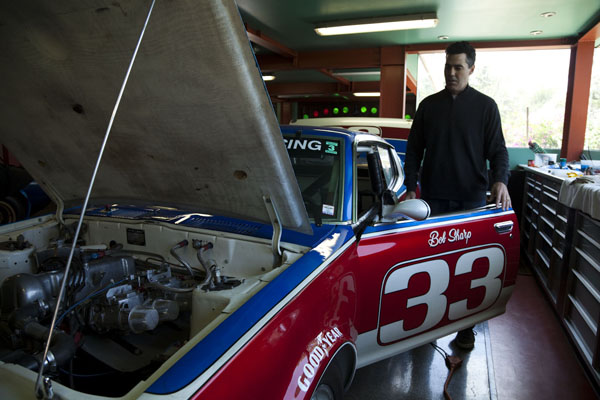
Adam Carolla
Eventually, Carolla “dug ditches” long enough to buy himself a box of tools and a truck, and became a full-time carpenter, a job he held for the next 13 years. “I did a lot of shit work [during that time]: hanging drywall and cracking houses. I learned all that stuff, and I got to explore a bit—evolve a bit as a designer,” he says, “As you do [carpentry], your mind starts working and you start seeing stuff. Most designers, they don’t build, and most builders don’t design, and most architects don’t really build, and I don’t know—I feel like you gotta kind of do it. I feel like I have this great advantage because I actually build. I know how to build,” he says.
Comedian, carpenter, designer—call him what you want, just don’t call him handy. “I know the codes. I know the difference between R19 insulation and R32, and I know layout, and I know that your studs are 16 on center, and I know what ‘on center’ is. But Ty Pennington doesn’t know this. It seems like he knows this, but he doesn’t, because I’ve interviewed him. And I don’t want to be lumped in with the ‘handy’ guys because it’s what I did as a living.”
After more than a decade in the construction world, Carolla somewhat serendipitously found his way into comedy. While working nights as a boxing instructor for a Los Angeles gym (the sport being another lifelong passion of his), Carolla was approached by local radio station K-ROQ, to train on-air personality Jimmy Kimmel. Known on-air as “Jimmy The Sports Guy,” Carolla was tasked with training Kimmel for an upcoming celebrity fight. The student and trainer quickly formed a friendship, which led to Carolla making appearances on Kimmel’s radio show.
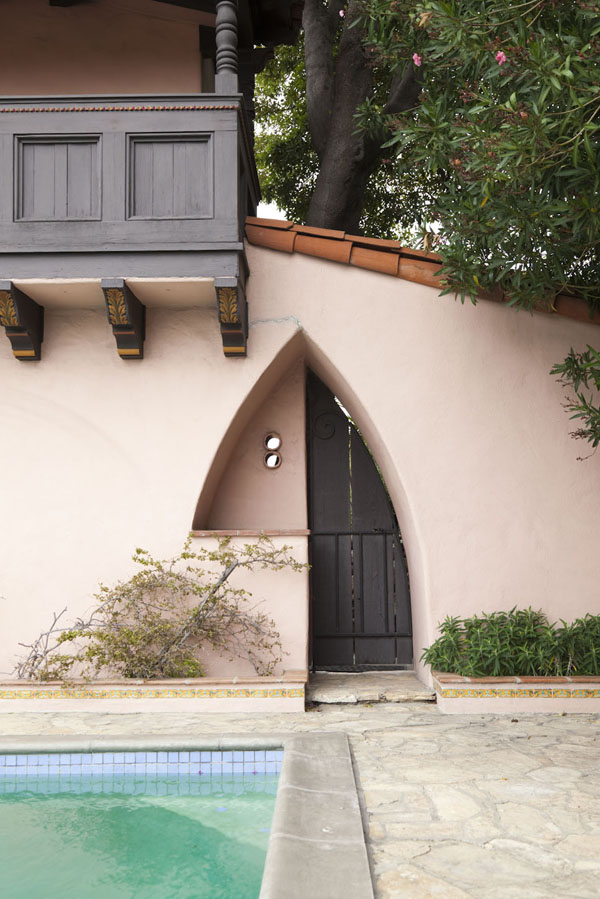
The successful pairing eventually led to them co-hosting four seasons of The Man Show, followed by four seasons of Crank Yankers, and a decade-long run for Carolla on the radio (and later MTV show) Loveline. As a result, Carolla found himself with an income that allowed him to work on his own design projects and no longer needing to build homes for strangers. “I sort of went nuts from a building standpoint because I felt like I was deprived [as a child]. Guys do it with women. Half the assholes in Hollywood, you know, none of them got laid in high school, and they all just went fuckin’ nuts when they got it. So it’s like that, but with woodworking.”
Purchasing his first Hollywood Hills home in 1996, which, according to Carolla was the third house built in the originally titled “Hollywoodland” area, was a significant milestone in his life. “I just overcompensated for what I thought was an architectural void in my childhood,” he says. But restoring the manse to a livable condition was no easy task. Calling on his self-proclaimed days of “swinging a hammer,” he put his years of construction know-how and design skill to the test to restore the dilapidated home to its original glory. He recalls bringing Kimmel out to the property for the first time. “Jimmy showed up and said, ‘Why don’t you just get a new house?’ ” After some tense moments during construction, and near-accidents while securing the chimney to meet California earthquake code standards, Carolla was able to restore the home to its original 1923 specs. “It was like an old car, and I just put it back to what it was.” He still owns the property today. “Working on other people’s houses all the time, it got you thinking about what you did like, and what you didn’t like. You get your own style.” Carolla’s encyclopedic knowledge of building and design is enough to make even the most experienced craftsman take notice. However, his years of work experiences have not just shaped him as a carpenter, but also as a problem-solving designer in his own right. A point, which, he illustrated quite vividly while describing the restoration of the original kitchen floor in the home he currently inhabits.
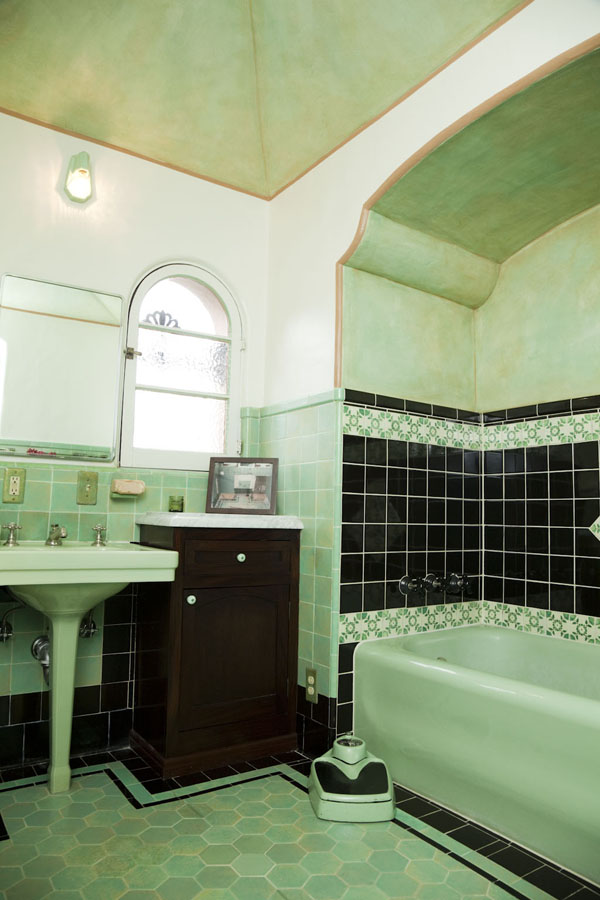
“So it’s like this: in old houses, like in the 20s, they put down clear Douglas fir—clear meaning it didn’t have any knots in it—and it was tongue-and-groove, and it was a real inch versus three-quarters of an inch, and… it was beautiful, to me,” he says, contrasting the natural beauty of the original 20s-style kitchen floor with the cheap vinyl covering that had been tacked on top when he purchased it. “The problem is, once you tear everything out—the vinyl, the cabinets—and you move shit around, you have a bunch of holes from plumbing and electrical and sewage, whatever. You would have had this beautiful, old growth clear Doug fir, which you couldn’t mill or buy today, but [now] it’s got a bunch of big holes in the middle of it. So how do you repair the big, gaping holes in your tongue-and-groove Doug fir floor? Most people [would] go, ‘Well, I guess you gotta cut out the part with the big holes in it and replace it,’ but you can’t do that because it’s tongue and groove, and it’s in, man. But I said, ‘I bet there’s a way I can figure this out.’ ” And he did, by devising his own solution involving routers, square mortises, jigs and various other carpenter’s tools of the trade before finally figuring out the floor puzzle—filling in the unsightly holes with a similar sanded wood and painting over both, making the two indistinguishable from each other.
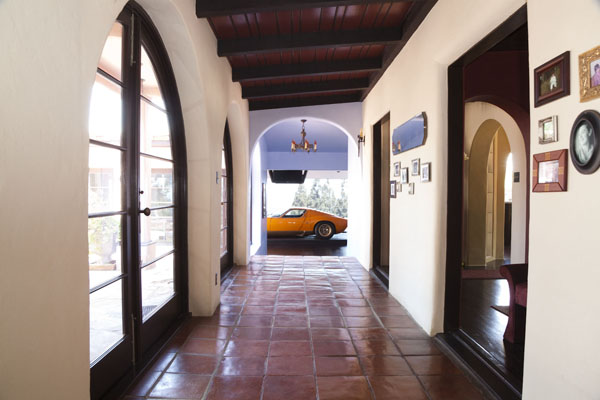
He describes the entire process in painstaking detail—expounding on the differences in routers, preferred sanding techniques before remarking to “raise your hands if you don’t know what this means.” “It’s a good example of my experience knowing I could save the floor. Most carpenters would go, ‘Fuck it—you gotta go over it with plywood,’ and a designer would go, ‘Fuck it—you gotta go over it with plywood,’ and I was able to figure it out with mortising. And yeah. I’m a genius. For that floor thing alone.”
His desire to save the original floor of the Hollywood Hills home is indicative of Carolla’s design sensibilities and aesthetic. “I don’t understand how people rebuild a classic car and then put shitty chrome rims from today on it. “‘Well, these are cool’,” he says mockinginly. “‘Yeah, these are cool on a Denali, but not on a Duesenberg.’ People get so caught up with what’s cool, but like, it’s not gonna be cool in 10 years when I can tell you when you did the rims on your car. You can walk into anyone’s bathroom and be like, ‘Oh. 1980? 1981? When did you redo this bathroom?’ with the pink and black tiles like Miami Vice in the middle of a cool 1940s or 1920s house. Put everything back the way it was if you’re doing an old house.”
Passion for design and carpentry work aside—Carolla has a warning for anyone looking to build in LA: don’t do it. With strict earthquake and environmental codes, and seemingly needless regulations making it nearly impossible to do construction work, he goes off on one of his infamous rants about what it’s like to try to build anything in L.A. “L.A. is a total bullshit rip-off of a town. I mean, anybody who tries to build, it’s a total disaster. Don’t even try. That’s why everyone clears out of L.A.—like every business. You can’t do anything there. It’s horrible. Just to Texas. Go anywhere; just don’t try [L.A.]. The building department, why not? They just see suckers with checkbooks and they let the gouging party begin. They’re just fucking gouging the fuck out of anyone who tries to do anything.”
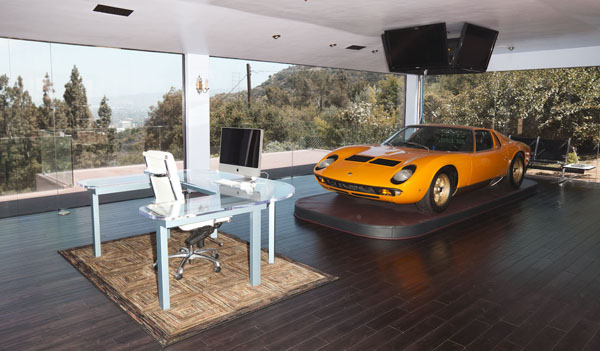
The same goes for L.A.’s beachfront neighbor, Malibu. “Don’t even think about Malibu. Essentially, they attack people who build. And it’s a crazy bureaucracy. I can’t tell you all the people that were like, ‘Eh, I was gonna build something’ but don’t do it. And they don’t realize how much it’s hurting their own economy by turning on their own revenue base. You know, Suzanne Somers lived in like Malibu for, like, a million years, and I interviewed her after her house burned down. And I was like, ‘You gonna rebuild?’ And she was like, ‘No way, I’m too old.’ You can’t do it. It’s a literal five-year process just to get the paperwork in order. If you live in Malibu and you’re dealing with the coastal commission? You ain’t doin’ shit for five years, and $100,000, and the approval of a bunch of fuckin’ Sean Penn’s friends. There’s a whole fuckin’ committee of the same hypocrites. They’ll ‘look out’ for you, and they’ll ‘look out’ for the coastline and the indigenous wildlife, and they’ll get to your shit in their sweet time, and—don’t call them, they’ll call you. And that’s it. You’re not building anything.”
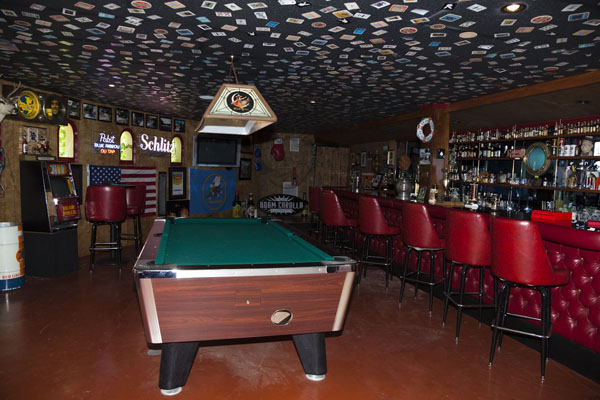
After the near 20-minute rant reaches a boil, Carolla seems to have worn himself out and reverts to back to the quieter demeanor he exhibited at the start of the conversation. But before retiring to his hotel room for that much needed nap, he offers his final thoughts on design and where he finds inspiration. “To me, design is not a linear thing that has a beginning and end. It has a sort of evolvement to it. It’s sort of a flowing thing, where ideas that [have] just layed dormant for years all of a sudden they hit you and, it’s like ‘oh yeah…’.”
Still, the fact remains that projects like installing a custom hydraulic lift in his garage and turning an old warehouse into the headquarters for his wildly successful podcast show are easy to accomplish with a celebrity bank account. They’re not the sort of design projects the average person can undertake. To this point, Carolla offers a simple response. “You know, design is free; the execution is where the money comes in. The part where you think of it, where you lay it out—that whole part doesn’t cost a penny. You could do that from a prison cell. It’s, you know, the actual Viking stove in the prison cell that becomes costly.”
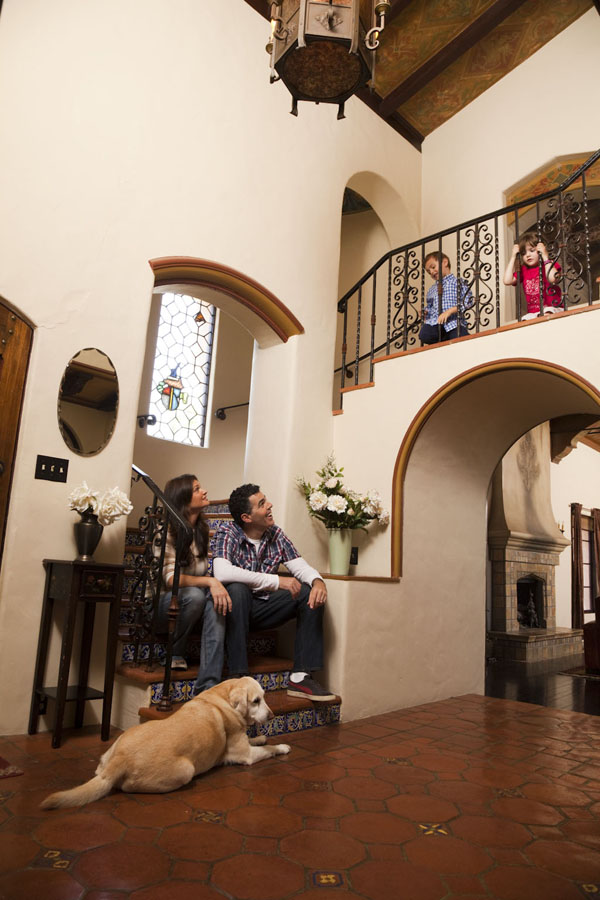
Adam Carolla’s book, In Fifty Years We’ll All Be Chicks: And Other Complaints From An Angry Middle-Aged White Guy from Random House is available in bookstores everywhere. His podcast is available for free download on iTunes or at www.adamcarolla.com.
By Kristin Lamprecht and Stewart Kuhlo. Photos by Aaron Farley
(via Design Bureau, 2010)


